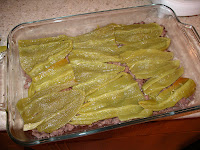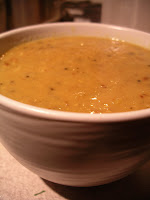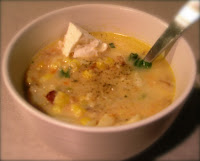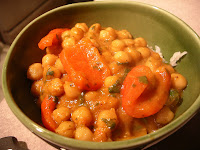As you may (or may not) have heard I recently had the misfortune of receiving a skull fracture and a
subarachnoid brain hemorrhage courtesy of some not-so-friendly DC muggers. It is not the best idea to click that link, as it is pretty frightening, though fortunately my case seems to have been relatively minor. The doctor's hospital discharge papers assure me that I have no neurological deficit! Phew! I was finally feeling up to cooking, and it being Mother's Day and all, I decided to make my mom (and the friends that we are currently imposing on) some shrimp biryani. Also, I figured it would be a good test to make sure there was really no neurological deficit! Well, without further ado, here is how I did made themselves!
Biryani is the general name for the genre of rice-based dishes popular in India and the Middle East. This version seemed to be quite popular in the southern Indian states of Goa and Kerala that I visited last summer, so I thought I would give it a try. Here is what I used:
Marinade:
1 kg Shrimp (peeled) (J wonders if half this amount is sufficient)
1 Lime
Salt
1 Tablespoon Coriander Powder
1 Teaspoon Turmeric
Biryani Base:
1 Tablespoon Cumin Seeds
2-4 Cardamom Pods
1 Large Onion
1 Large Jalapeño Pepper (or more to taste)
4 Cloves Garlic (finely diced)
1 Finger-Length Piece of Ginger (finely diced)
1 Cup Dried Coconut
1 Teaspoon Turmeric
1-2 Tablespoons Garam Masala
1 Tablespoon Coriander Powder
2 Handfuls Raw Cashews
2 Handfuls Raisins
2 Medium Tomatoes (diced)
Rice:
2 Cups Jasmine Rice
Assortment of Cardamom Pods, Cloves, Cinnamon, etc
Start out by marinating the shrimp for at least 30 minutes in the lime juice and spice mixture. Meanwhile start cooking the rice as you would
regular jasmine rice but with slightly less water than usual and including cardamom and the other whole spices to give the rice some extra aroma. Stop cooking the rice when it is just about done, but not quite. At this point it's a good idea to remove the whole spices so you don't leave any surprises for people to bite into!
Next, start the base for the biryani. Heat some olive oil, and fry the cumin seeds and cardamom pods. Add the onions, then garlic, ginger, hot pepper, a bit of salt and saute till the onions are soft. Add the coconut, cashews, and raisins and cook a few minutes longer. Add the powdered spices and fry a bit longer. Now add the tomatoes, and cook until they reduce. Now you can add the shrimp and cook until just about done. At this point you could also add some yogurt to give things a bit more creaminess (though I forgot this step last night). Now you should have a nice base for the biryani!
Add in the rice bit by bit, stirring well to incorporate the base into the rice. If the mixture is too dry, add some water, and cook covered for 5 minutes or so, until rice is completely cooked. At this point, I added some sliced tomatoes on top of the rice, which will steam during the 5 minutes of extra cooking, and make a nice garnish.
When everything was done, we turned the pot out onto a large serving tray and this is how it looked. Not bad, for a first try!




















































